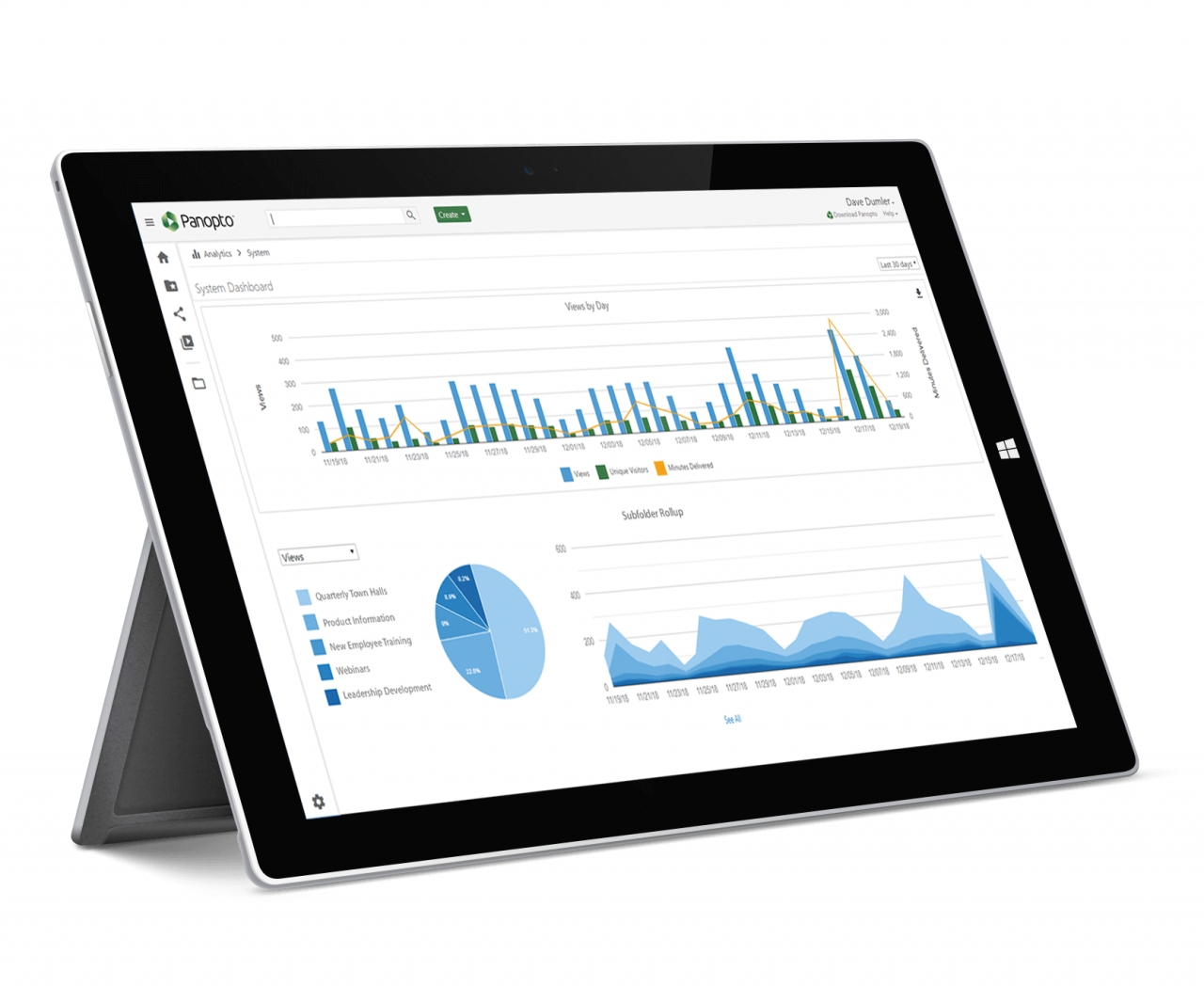- Communications
Making Change Management Strategies More Effective With Video

Today, the ability to manage change as a business has a definitive impact on both short and long term success. New business strategies, culture changes, digital transformations, mergers and acquisitions, transitions to remote working, and organizational restructuring are all common among enterprises working to adapt to changing markets.
As change leaders will be the first ones to tell you, however, they don’t always get it right.
Complex transitions demand strong leadership, astute planning, and exceptional communication. And soft factors like influencing culture and motivating workers can be as difficult to get right as hard factors related to the strategic implementation of changes.
Great leaders know that it is not enough simply to tell people how you want them to change. You also need to put in place mechanisms that can help them implement new behaviors. And communicating effectively throughout the journey reduces resistance and supports adoption.
That is in part why, while every organization has its own way of managing change and every initiative will have a unique execution strategy, more and more businesses are leveraging video during times of transition to help communicate and execute their change management strategies efficiently and effectively.
Here’s how businesses are using video to make these difficult and complex undertakings a little easier.
8 Ways Video Can Help Change Management Strategies Succeed
Improve How You Communicate Change
Whether your company is introducing a new business strategy, restructuring, incorporating an acquisition, shifting culture, or implementing a new process, ensuring employees feel informed and prepared is crucial to getting the company-wide buy-in any change needs to succeed. Communicating the right messages, at the right time, and through the right channels is often one of the toughest challenges leaders face.
With video, change leaders can deliver consistent, engaging messages at scale to everyone in the company without having to get everyone into the same room. Here are 3 ways video helps enhance communications during your change management process:
1. Communicate clear, consistent, detailed messages that can be watched on-demand
Communicating the vision and roadmap for a change management project is as important as delivering updates along the way. But how do you get the same message out to everyone, with all the important details?
An email or memo may deliver all the right words (that is, if people actually read them), but they can’t communicate a senior leader’s tone or body language like a video can. No matter the message, capturing it in a video ensures nothing is lost and important messages are received as intended. And with on-demand videos, busy employees can watch when they are able to give their undivided attention and replay parts they might want to see again.
When face-to-face communication is most effective, video is the best way to scale up and reach as many of your people as possible without disrupting the everyday flow of work. Through video, senior leaders can deliver consistent messages that are transparent and engaging to the entire company. Then, after employees have watched the initial communication, managers can focus on helping their teams and direct reports understand how new changes will impact them.
2. Engage your entire workforce at once with internal live streams
Guiding your workforce through a change can be extra challenging when your most critical communications are given little more than a quick skim by people who are distracted — or missed entirely because of competing commitments.
More and more change leaders are leveraging live streaming to drum up a sense of FOMO (fear of missing out) to make important communications events more compelling.
By live streaming your critical change initiative messages, you can deliver information to everyone in your company as if they are right there in the room, even if they can’t be there in person. Interactive live streaming platform that supports live Q&A enables leaders to broadcast internal communications securely and answer questions from those watching on the fly.
3. See how messages are connecting with detailed video analytics
Without video, it’s almost impossible to know how your internal communications are connecting with employees. Detailed video analytics, however, can show you things like who is watching, how many people watched, whether they are watching it through to the end and where people drop off, and you can even see the parts of your communications that are viewed the most.

Compared to emails or even internal meetings, analytics from your videos will provide you with a lot more information and viewer data that can help you improve future communications, or help you determine if there are details you need to present again for your employees.
Enhance Collaboration Across Teams
Enacting change across an organization more often than not requires coordination between multiple teams — teams that may not typically work together and may not even be in the same time zone. Just as complicated, new teams or experts may come into a project that has already been in the works for months.
So how can you get everyone up to speed as quickly as possible, and how do you ensure they can easily share detailed knowledge? Video. Here are 2 ways to use video to support efficient communication and collaboration across teams throughout the duration of a change management project:
4. Record meetings to quickly get everyone on the same page
Big organizational changes never almost always require collaboration from many different teams at different times. But when new teams or experts come into a project that’s already in progress, getting them up to speed requires time and effort from others already in the know. You can get people up to speed on a project more quickly simply by recording your meetings.
When you document and record all your internal meetings, anyone new joining the initiative can watch any past meetings in your video library and get caught up to speed, or they can search your meeting videos to find the important conversations relevant to their contribution on the project to get the historical info they need to move things forward.
5. Use video to capture and share knowledge across teams
When teams need to collaborate on a change management project, they tend to either send a lot of detailed emails or hold numerous meetings, or both. Neither of these methods is as comprehensive and efficient as using video to share knowledge — particularly when teams are separated across different offices, sometimes on different continents.
With video, a team lead can record themselves sharing their expertise while presenting their screen and walking through a process or explaining a system that the other team might not be familiar with. In that way, video makes it possible to learn as though you’re looking over a teammate’s shoulder, without having to be in the same room. And there’s no need to spend hours crafting a written message — knowledge can be shared in as much time as it takes for an expert to explain it, just by pressing record and sending the video.
Demonstrate New Systems and Processes
As processes and systems change, organizations need to teach new skills and retrain employees — at scale. Training every employee in-person is not only expensive but also time-consuming. And today, 75% of your employees would rather watch a video that shows them how to do something new than read a written training document.
Here’s how organizations are using video to teach and retrain their workforce at scale, while engaging employees in deeper learning.
6. Document and walk through new processes in video tutorials
Typing up instructions and processes that are critical for your workforce learning and adopting new systems requires a big time investment. These days, most people prefer to learn from videos that show them how to do everything from using excel to learning to code. In fact, those kind of “How-To” videos are now the second most popular type of content on YouTube. So skip the written instructions and start recording your how-tos in videos!
Creating video tutorials to educate your workforce on new processes and systems can be as easy as pressing record. With a video platform like Panopto, you can record and securely share video tutorials in just a few clicks, and they’ll even be automatically searchable just like your old written documents and manuals.
Watch a video tutorial recorded with Panopto:
7. “Flip” your presentations and engage employees
Of course, some amount of any change management communication or training will be best delivered in-person. So help change managers and others make the most of face-to-face presentations by giving them the tools to “flip” their sessions, classrooms, and meetings.
With flipped training, workers learn new skills or behaviors by watching training videos before class, and then they spend class time with instructors practicing and applying what they learned. And all you need is a video tool that lets instructors easily record training sessions and share them with employees. Flipped training is based on a teaching methodology called the flipped classroom that was made popular in higher education — because workers learn by doing in class with instructors to guide them, they can adopt new behaviors and learn new skills faster.
Flipping can be a valuable approach to just about any presentation. Sharing the key messages and important details with employees ahead of time can help you get more thoughtful questions at town halls, help project kickoffs start moving more quickly, and can even help make meetings more productive. Want to learn more? Download our free guide, The Practical Guide to Flipping Your Meetings.
8. Create a searchable video training library
Research shows that when it comes to adult learners, within one hour, people will have forgotten an average of 50 percent of the information presented in company training. Worse, within 24 hours, they’ll have forgotten almost 70 percent, and within a week, almost 90 percent. It’s not that they don’t value what you’re teaching, it’s just simple human nature. Unless the details you’re sharing now will be practically applied several times over the next few days, the overwhelming likelihood is that your people won’t hold on to much more than the basic themes for very long.
Worrying about this “forgetting curve,” however, is missing the point. Because while it would be nice if your people could accurately recall every last moment of each of your lessons, the reality is you don’t need them to. You just need them to know the information exists — and where they can find it.
When you capture training and knowledge in videos and host them in a central, searchable video library, employees can quickly find and review the materials exactly as they were presented originally exactly when they need the information most.
Panopto’s video platform includes SmartSearch, which indexes every word spoken and shown on-screen in your videos. This means employees can search your video library just like they would the web or an email, find the exact moment in a video a topic is addressed and jump to that part of the training to watch it exactly as it happened. It’s the easiest way to ensure everyone has access to the same information on-demand, and that no matter when they play it back, everyone will hear it presented in the same consistent way.
Support Your Change Management Strategies With Video
Panopto is the leading enterprise video platform for communicating and training. Try it for yourself free and see how easy recording, streaming, and sharing internal videos for work can be.


